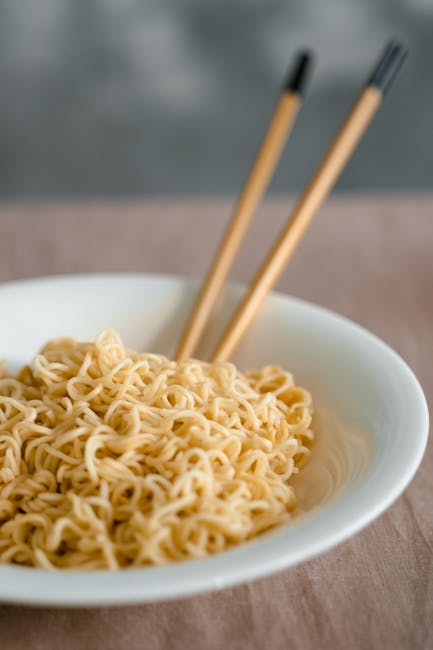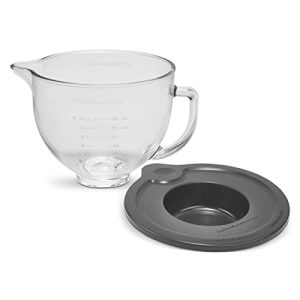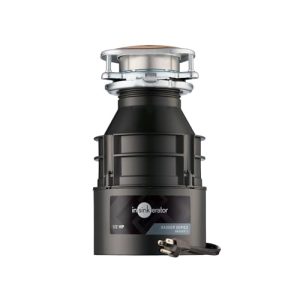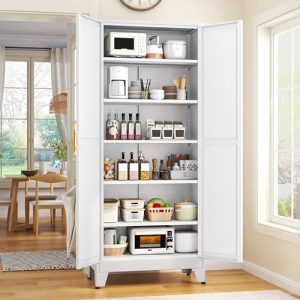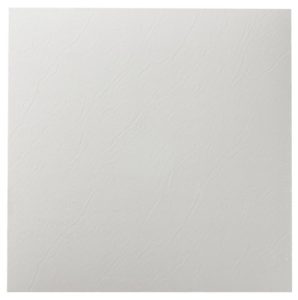Have you ever struggled to remove your Kitchen Aid bowl and felt stuck or unsure? You’re not alone.
Knowing how to easily and safely take the bowl off can save you time and frustration in the kitchen. In this guide, you’ll learn simple steps that anyone can follow—no tools or special skills needed. By the end, you’ll feel confident handling your Kitchen Aid like a pro, making your cooking experience smoother and more enjoyable.
Keep reading to discover the quick trick that most people miss!
Identify Your Kitchenaid Model
Identifying your KitchenAid model is the first step to safely removing the bowl. Different models have different designs and mechanisms. Knowing your model helps avoid damage and makes the process easier.
KitchenAid mixers come in many styles. Some have tilt-heads, others have bowl-lift arms. Each type requires a slightly different approach for bowl removal.
Look for the model number on your mixer. It is usually on the bottom or back side. This number tells you exactly which model you own.
Locate The Model Number On Your Mixer
Turn your mixer upside down or to the back. Find a small sticker or plate with numbers. The model number is often near the power cord or base.
Understand Tilt-head Vs. Bowl-lift Mixers
- Tilt-head mixers have a head that tilts back.
- Bowl-lift mixers use arms to raise and lower the bowl.
- Each style has a unique way to release the bowl.
Check Your Mixer’s Manual For Specific Instructions
The user manual has detailed steps for your exact model. Manuals are helpful for safe bowl removal. You can find manuals online by searching your model number.
Identify Key Features Of Your Model
- Look at the bowl attachment point.
- Notice how the bowl locks into place.
- Check for release levers or knobs.
Prepare The Mixer For Removal
Preparing your Kitchen Aid mixer for bowl removal helps avoid damage and makes the process smooth. Take a few moments to get the mixer ready. This step ensures safety and ease.
Unplug The Mixer
Always unplug the mixer before you start. This prevents accidental starts and keeps you safe.
Lower The Mixer Head
Press the release lever to lower the mixer head. This gives better access to the bowl.
Remove Attachments
Take off any attachments like beaters or dough hooks. This clears the workspace and avoids damage.
Clean Around The Bowl
Wipe any food or batter from around the bowl. This prevents slipping or sticking during removal.
Locate The Bowl Lock Mechanism
Locating the bowl lock mechanism is the key to safely and easily removing your KitchenAid bowl. This small but important part holds the bowl securely during mixing, so understanding where and how it works saves you from frustration and potential damage. Let’s break down how to find this mechanism and what it looks like on your stand mixer.
Understanding The Bowl’s Position On The Mixer Base
Your KitchenAid bowl sits on a circular base that connects it firmly to the mixer. This base typically has a locking feature that prevents the bowl from moving while the mixer is running. Before trying to remove the bowl, take a moment to observe how it’s attached—notice if it feels tight or if it can twist slightly.
Identifying The Bowl Lock Lever Or Tabs
Look closely around the base of the bowl where it meets the mixer arm. You’ll often find a small lever or a pair of tabs that function as the lock. These parts either snap into place or require a slight twist to release. They are usually made of the same material as the mixer base, blending in but visible once you know what to look for.
How To Test The Bowl Lock Without Force
Gently try to turn the bowl counterclockwise or lift it slightly. If it doesn’t move, the lock is engaged. Avoid forcing it, as this can damage the locking mechanism. Instead, find the lever or tabs and press or twist them as needed to unlock. This simple action releases the bowl safely.
Common Variations In Lock Mechanisms
Depending on your KitchenAid model, the bowl lock might look different. Some have a twist-and-lock system, while others use a lever that you flip up or down. If your mixer came with a manual, it’s a good idea to check the illustrations or instructions—it can save you time and prevent mistakes.
Release The Bowl From The Mixer
Turn the bowl gently to unlock it from the mixer base. Lift it straight up to remove the Kitchen Aid bowl safely. Avoid twisting too hard to prevent damage.
Releasing the KitchenAid bowl from your mixer can seem like a tricky task at first. Whether you’re a seasoned chef or a casual baker, knowing the correct technique is crucial. A smooth release not only saves time but also prevents any damage to your beloved kitchen companion.Twist And Lift Method
This is one of the most common methods used by many KitchenAid owners. First, ensure the mixer is turned off and unplugged for safety. Next, gently hold the base of the bowl with both hands. Twist the bowl counterclockwise, and you’ll feel it loosen from the lock position. Once it’s free, carefully lift it straight up and away from the mixer. Isn’t it satisfying to see how easily it detaches? Remember, practice makes perfect. With a few tries, this method will become second nature.Lever Or Button Release
Some KitchenAid models come with a lever or button mechanism for bowl release. Identify the lever or button, usually located near the mixer head. Press or slide it while firmly holding the bowl. This action releases the bowl, allowing you to lift it out effortlessly. Have you ever noticed how convenient this feature is? It’s like the mixer is giving you a helping hand. Make sure you familiarize yourself with this feature if your model supports it. Using these methods, you’ll soon be swapping out bowls like a pro, ready to tackle any culinary challenge.Troubleshoot Common Issues
Removing a Kitchen Aid bowl can sometimes be tricky, especially if the bowl feels stuck or hard to detach. Understanding common issues can save you time and frustration. Let’s troubleshoot some typical problems and share tips that keep your mixer running smoothly.
Stuck Bowl Solutions
If your Kitchen Aid bowl won’t come off easily, first check if it’s locked in place. The bowl’s locking mechanism can sometimes get jammed due to food residue or improper alignment.
- Try gently twisting the bowl:Hold the base firmly and twist the bowl counterclockwise. If it resists, avoid using excessive force to prevent damage.
- Use warm water:Running warm water around the base of the bowl can help expand the metal slightly, loosening any stuck parts.
- Check for leftover dough or batter:Sometimes, dough hardens between the bowl and the mixer base. Use a soft cloth to wipe off any residue before attempting removal.
Have you ever left dough to dry in the bowl overnight? That sticky mess can really lock the bowl in place. Catching it early makes removal easier.
Cleaning And Maintenance Tips
Regular cleaning prevents build-up that causes your bowl to stick. Always wash the bowl thoroughly after use, paying special attention to the locking area on the base.
- Hand wash with warm soapy water, avoiding abrasive sponges that can scratch the surface.
- Dry the bowl completely before attaching it to the mixer to avoid rust or corrosion.
- Wipe down the mixer base regularly to remove any flour or food particles that may accumulate.
Consider this: how often do you clean the locking mechanism itself? A quick wipe after each use can make a big difference in how smoothly the bowl detaches.
Attach The Bowl Back Securely
Attaching the Kitchen Aid bowl back securely is a crucial step to ensure your mixer works efficiently and safely. A loose bowl can cause the mixer to wobble or even damage the machine. Taking a moment to properly lock the bowl in place saves you from frustration during your next baking session.
Align The Bowl With The Mixer Base
Start by placing the bowl onto the mixer base. Make sure the handle lines up with the notch or slot on the base. This alignment is essential because the bowl won’t lock correctly if it’s even slightly off.
Twist The Bowl To Lock It
Once aligned, gently twist the bowl clockwise until you feel or hear a click. This click means the bowl has engaged with the locking mechanism. Avoid forcing it; if it doesn’t turn smoothly, double-check the alignment.
Check Stability Before Use
After locking the bowl, try to move it slightly by hand. If it feels stable and doesn’t shift, you’ve secured it properly. A wobbly bowl can interrupt mixing and cause spills, so this quick test can save you time and mess.
What Happens If The Bowl Isn’t Secured?
Have you ever started mixing only to find the bowl slipping or the mixer shaking? This usually happens when the bowl isn’t locked correctly. It can lead to uneven mixing or even damage the appliance, so don’t skip this final check.
Frequently Asked Questions
How Do I Remove A Kitchen Aid Bowl Safely?
To remove the Kitchen Aid bowl, first turn off the mixer. Hold the bowl firmly and twist it counterclockwise. Lift the bowl straight up once it feels loose. Avoid using excessive force to prevent damage.
Why Won’t My Kitchen Aid Bowl Twist Off?
If the bowl won’t twist off, it may be locked. Ensure the mixer is off and not in use. Try gently wiggling the bowl while turning it counterclockwise. Clean any food residue blocking the lock mechanism.
Can I Remove The Bowl While Mixer Is Running?
Never remove the Kitchen Aid bowl while the mixer is running. This can cause injury or damage the appliance. Always turn off and unplug the mixer before removing the bowl for safety.
How Do I Clean Under The Kitchen Aid Bowl?
To clean under the bowl, remove it first using the twisting method. Wipe the mixer base with a damp cloth. Avoid using water directly on the motor or electrical parts to prevent damage.
Conclusion
Removing your Kitchen Aid bowl is simple with the right steps. Start by unlocking the bowl and lifting it carefully. Avoid forcing it to prevent damage. Clean the bowl and mixer base after removal. Regular care helps your mixer last longer.
Follow these tips to make the process smooth and safe. Enjoy baking without hassle every time you use your Kitchen Aid.

Sophie Hartwell is the founder of KitchenQuik.com, where she shares kitchen tips, smart cooking hacks, and the best product picks to make everyday cooking easier and more enjoyable.
